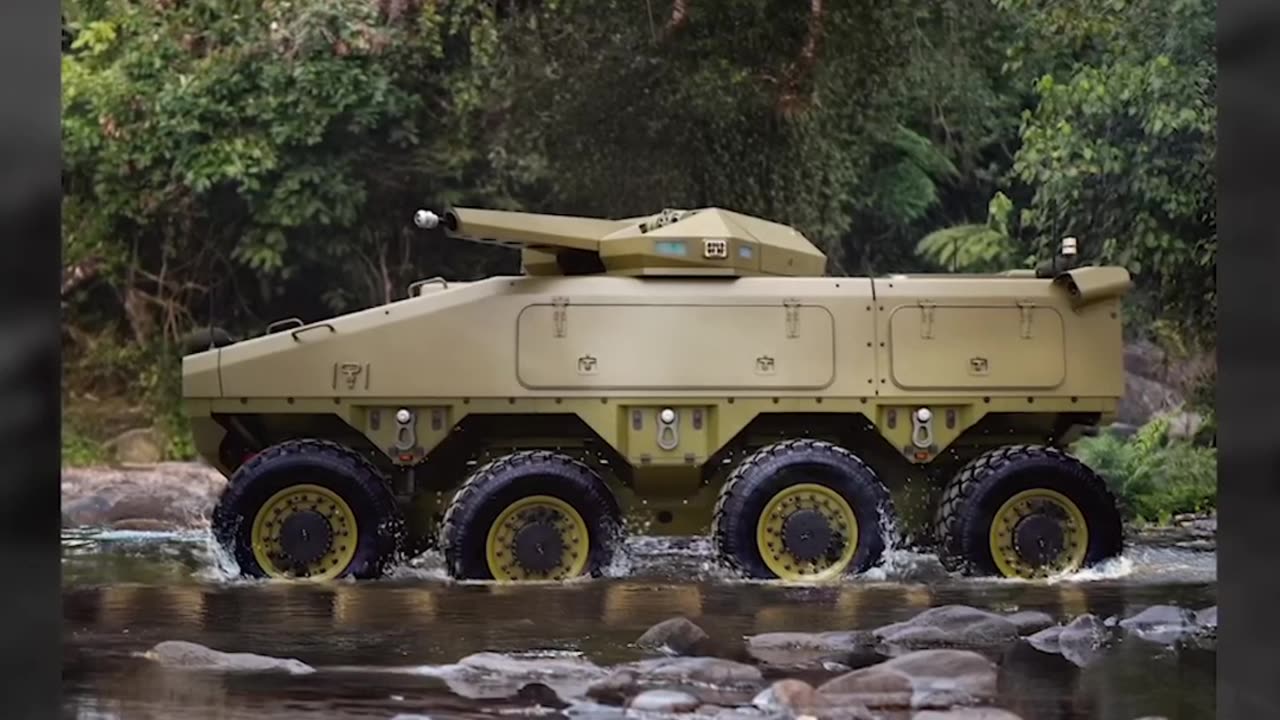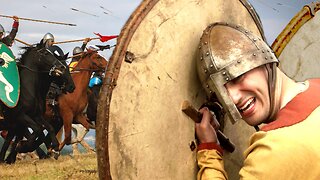Premium Only Content

The Future of Autonomous Combat!
The video explains the capabilities and roles of the Atlas CCV in combat scenarios.
[03:32-03:49]
The Atlas CCV's modular design allows it to perform various combat roles and make independent tactical decisions.
Its modular configuration lets it perform various combat roles, including counter-drone operations and indirect fire support. As a fully autonomous vehicle, it's able to avoid obstacles and build a route, but it's also able to make tactical decisions independently.
[03:49-04:35]
The vehicle features an advanced sensor suite that provides situational awareness while retaining fire control with the operator.
For this, a number of different sensors are built into the vehicle, which gives situational awareness as well as communication with other platforms. Although it has this autonomous capability, the control of fire stays with the operator of the vehicle. with what is known as a human in the loop targeting system. The Atlas can spot targets, but it is the person controlling who will make the decision to destroy the identified target. To help with these features, its advanced sensor suite includes a three hundred and sixty degree multispectral automatic target detection, tracking and classification system with capabilities such as day cameras, thermal imaging, acoustic sensors, passive electronic warfare, stereo vision and lidar.
[05:44-06:07]
The Atlas CCV's small size and firepower serve various operational roles, enhancing support for crewed combat vehicles.
The relatively small size, but significant firepower of the Atlas CCV makes it a perfect companion for crewed combat vehicles, letting it maintain contact with both tracked and wheeled vehicles across a variety of terrains and conditions. It has been designed for roles like flank security, target identification, engagement, reconnaissance, and direct fire support.
-

Nerdrotic
4 hours ago $7.85 earnedDown the Rabbit Hole with Kurt Metzger | Forbidden Frontier #090
33.3K7 -
 2:41:13
2:41:13
vivafrei
10 hours agoEp. 251: Bogus Social Security Payments? DOGE Lawsduit W's! Maddow Defamation! & MORE! Viva & Barnes
139K193 -
 DVR
DVR
Josh Pate's College Football Show
3 hours ago $0.86 earnedBig Ten Program Rankings | What Is College Football? | Clemson Rage| Stadiums I Haven’t Experienced
17.1K -
 LIVE
LIVE
Vigilant News Network
8 hours agoBombshell Study Reveals Where the COVID Vaccine Deaths Are Hiding | Media Blackout
2,307 watching -
 1:17:59
1:17:59
Sarah Westall
4 hours agoDOGE: Crime & Hysteria bringing the Critics & the Fearful - Plus new CDC/Ukraine Crime w/ Dr Fleming
10.1K2 -
 45:39
45:39
Survive History
10 hours ago $0.33 earnedCould You Survive in the Shield Wall at the Battle of Hastings?
6.49K5 -
 1:50:28
1:50:28
TheDozenPodcast
8 hours agoViolence, Abuse, Jail, Reform: Michael Maisey
34K1 -
 23:01
23:01
Mrgunsngear
1 day ago $2.94 earnedWolfpack Armory AW15 MK5 AR-15 Review 🇺🇸
42.2K12 -
 25:59
25:59
TampaAerialMedia
1 day ago $0.72 earnedUpdate ANNA MARIA ISLAND 2025
22.3K1 -
 59:31
59:31
Squaring The Circle, A Randall Carlson Podcast
10 hours ago#039: How Politics & War, Art & Science Shape Our World; A Cultural Commentary From Randall Carlson
17.4K2